| The Wounded Tree A peep at sapwood's attempts to cover a tree's injuries By Paul James
|
| The Wounded Tree A peep at sapwood's attempts to cover a tree's injuries By Paul James
|
Since the earliest times trees have evolved to repair exposed wounds to the trunk when branches died off from either insufficient light when grown in forests, or from the ravages of strong winds when limbs failed and exposed the inner wood to the invasion of fungi and marauding insects. Of course the young tree saplings too had problems caused by having their buds chewed off by birds or grazing animals.
Bark, the tree's primary barrier which protects the inner woody cells has to regrow over the exposed sapwood tissue reducing the rotting process to a minimum and also acts as an impermeable barrier against water loss, without which the tree would eventually dehydrate and die off.
Damage can also be caused by other means as well as by human activity. The first image shows some bark stripped off a sycamore tree ( Acer pseudoplanatus ) by squirrels which can ultimately lead to the demise of the tree if much of the bark is removed because fungal infestation weakens the underlying sapwood and thus its structural integrity, leading to broken branches and more infestation. The progressive regrowth of bark is a very slow one and in the case of the example above will take at least 4-5 years if not more. During this period the uncovered sapwood can become infested with fungal hyphae and also lichens before the new callus covers it. The time taken for healing depends on the species of the tree and the disposition of the wound with respect to the elements, and the area of the exposed damage.
The images below have been taken from samples of wind fall sycamore branches in various stages of healing from damage caused by squirrels. A transverse cut was made at appropriate parts of these branches to reveal the inner growth rings and decayed wood during their recent history of repairing the damage.
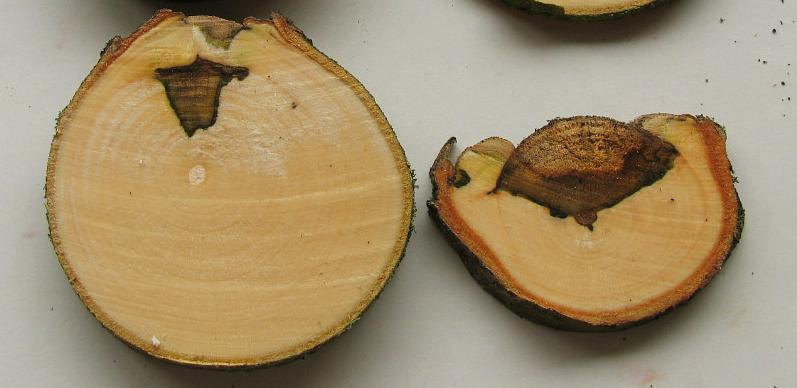 |
| The example left shows a repair from
about 2-3 years back and a second attempt to repair more
damage last year. The example right shows major damage which has stimulated the tree to grow a thick band of sapwood which had become infested with fungal growth too. This branch understandably failed and broke off during strong winds |
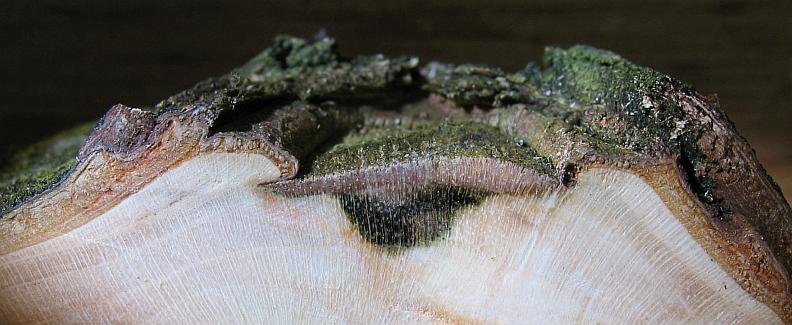 |
| View
of a cross section of a branch about 70mm in diameter
showing the darkening of the sapwood as rotting fungi take hold and also of the encroaching regrowth from both edges. |
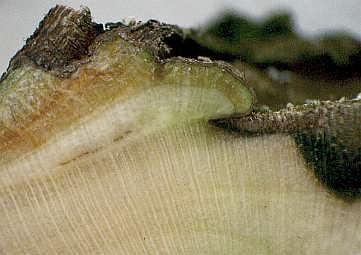 |
| Closer
view of above left showing also the growth rings of former years. |
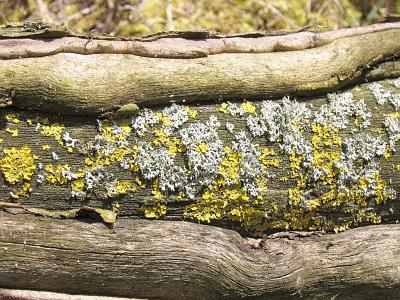 |
| Fallen branch showing excessive
regrowth attempt but failing as rotting fungi and lichen colonies rapidly reduced the strength of the branch before the repair had been completed. |
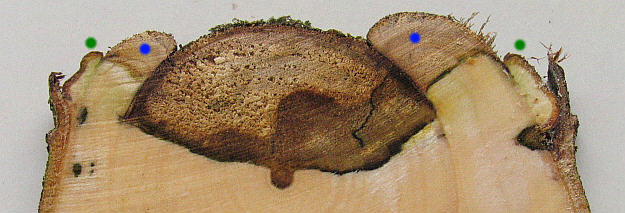 |
| Another example showing the unwearied
sapwood regrowth over last
year's sapwood's attempt to cover the rotting interior, which failed as fungal infestation claimed a greater foothold. |
Some of the images above were taken using a Canon Pro 1 in macro and super macro mode and also with the use of a low power stereo microscope and Minolta F300.
| All comments welcome by the author Paul James |
Microscopy
UK Front Page
Micscape
Magazine
Article
Library
Please report any Web problems or offer general comments to the Micscape Editor.
Micscape is the on-line monthly magazine of the Microscopy
UK web
site at Microscopy-UK